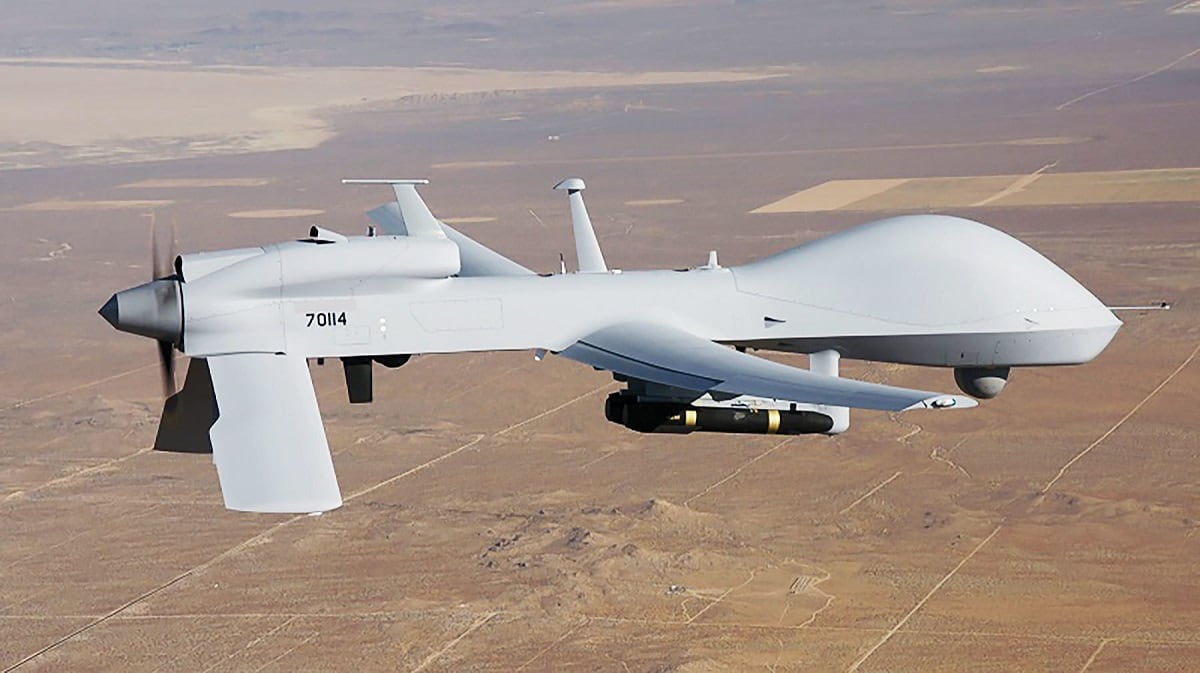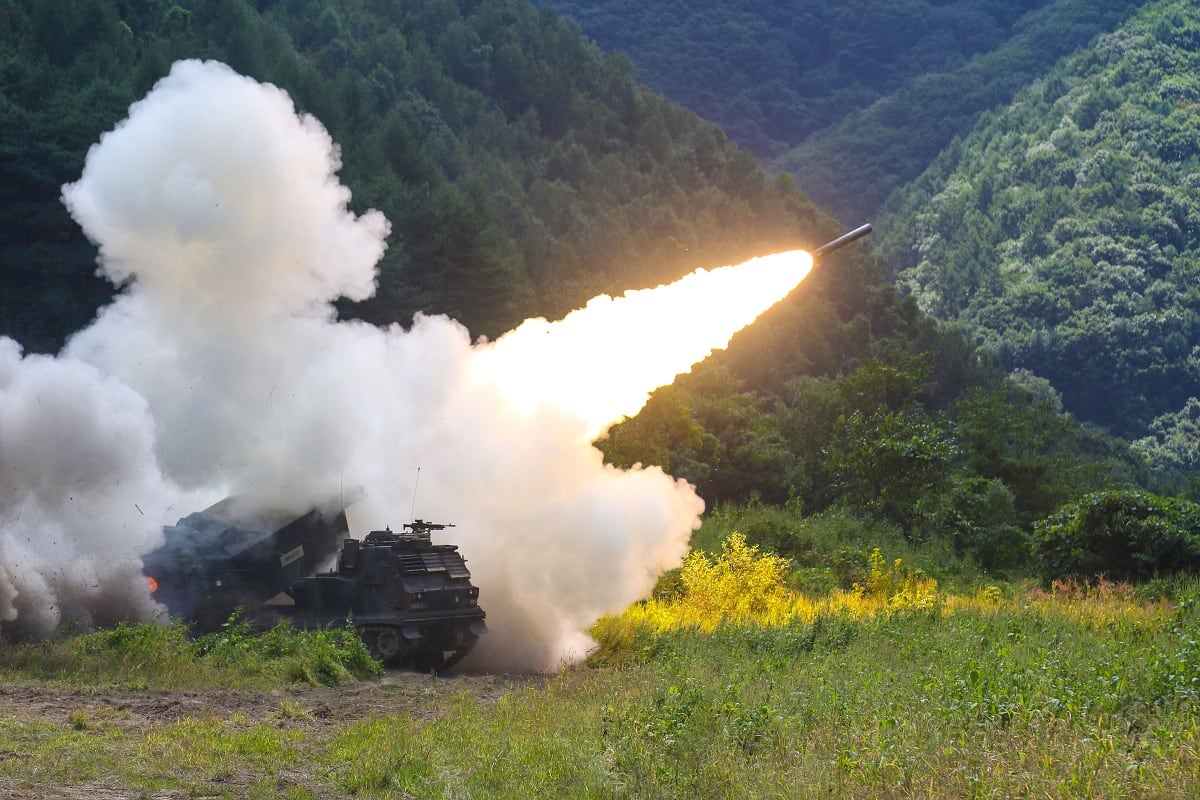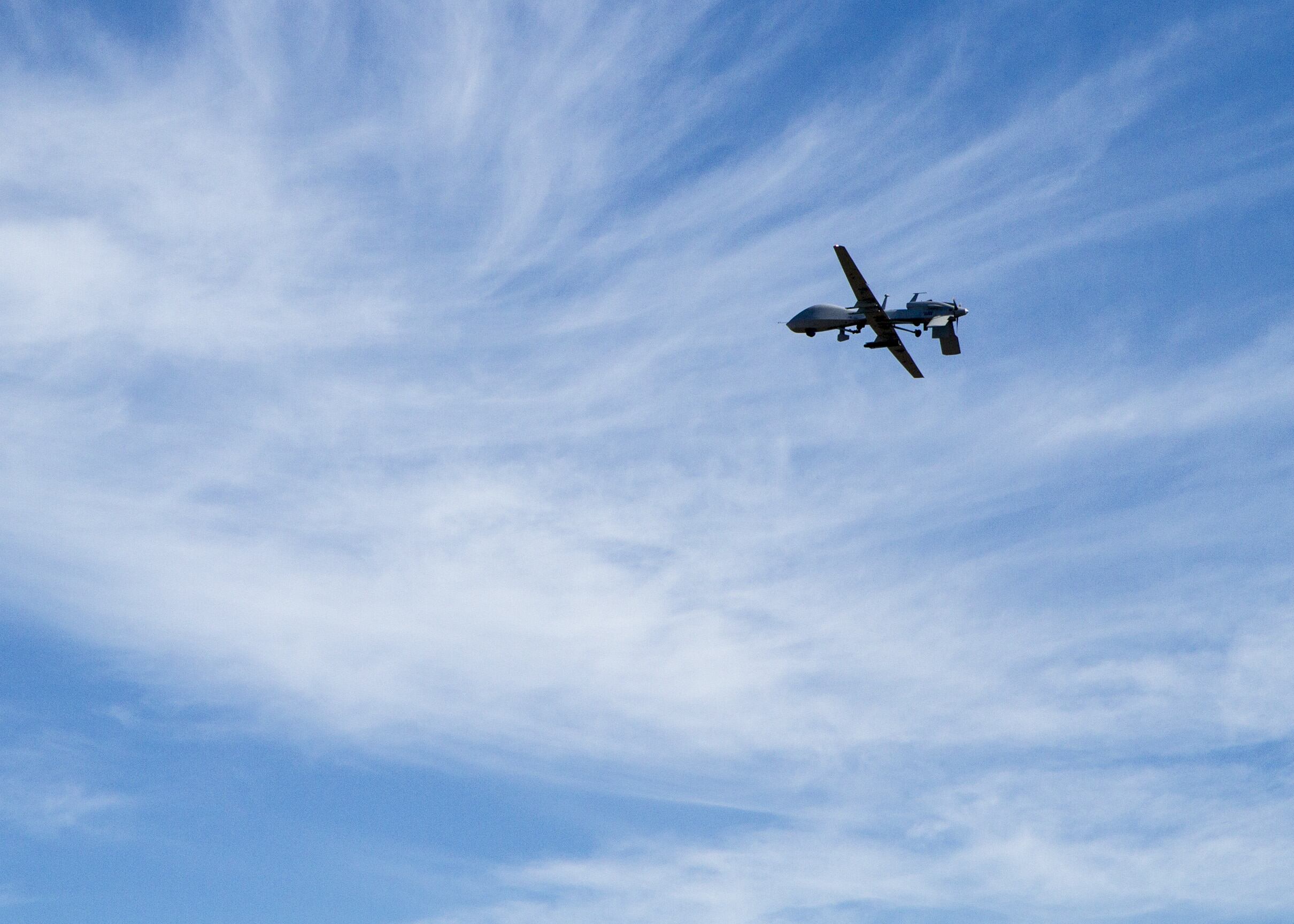The Multi-Functional Electronic Warfare Air Large pod, the Army’s first organic brigade electronic attack asset that’s now mounted on an MQ-1C Gray Eagle, flew for the first time in an Army exercise this summer.
RELATED

The program, known as MFEW Air Large, was awarded to Lockheed Martin last year. The defense contractor has been running test flights of the pod, as part of the Army’s Cyber Blitz exercise in September.
The platform is not slated for delivery to units until 2022, but in the meantime the Army is continuing to test the new system from a technology and concepts perspective.
While the Army learned about the pod during the Cyber Blitz exercise — and is awaiting more results from the demonstration — the Army’s electronic warfare program manager described one promising area for future operations.
“The air pod solutions are very important, especially when you start going against a near peer competitor. The main reason why is because you start now dealing with more of an [electronic intelligence] ELINT threat than with a strictly commercial threat,” Col. Kevin Finch, program manager for electronic warfare and cyber within Program Executive Office Intelligence, Electronic Warfare and Sensors. Finch spoke about the system to C4ISRNET during an interview Oct. 15 at the annual AUSA conference.
“The ability to see radar systems … or artillery type radar systems, we need to be able to see that. Obviously, EW, you have to have some height to the antennas to be able to see a lot of that. If it’s on a pod solution, that’s a lot easier.”
These systems are similar to the types of threats brigades will face in conflict.
Finch said the technology will help support the service’s No. 1 modernization priority: long range precision fires.
As part of the improvement effort, the Army created an intelligence, surveillance and reconnaissance task force, aimed, in part, at determining how the Army will be able to see 1,000 in order to shoot 1,000 miles.
RELATED

In many cases, non-kinetic capabilities will make that possible.
“You might not be able to see the radar, use the full motion video or other techniques, but you can definitely see it in the [electromagnetic spectrum]. From that perspective, it brings a long of capability to the force and we’re very interested in getting it into the hands of tactical commanders,” he said.
Mark Pomerleau is a reporter for C4ISRNET, covering information warfare and cyberspace.








